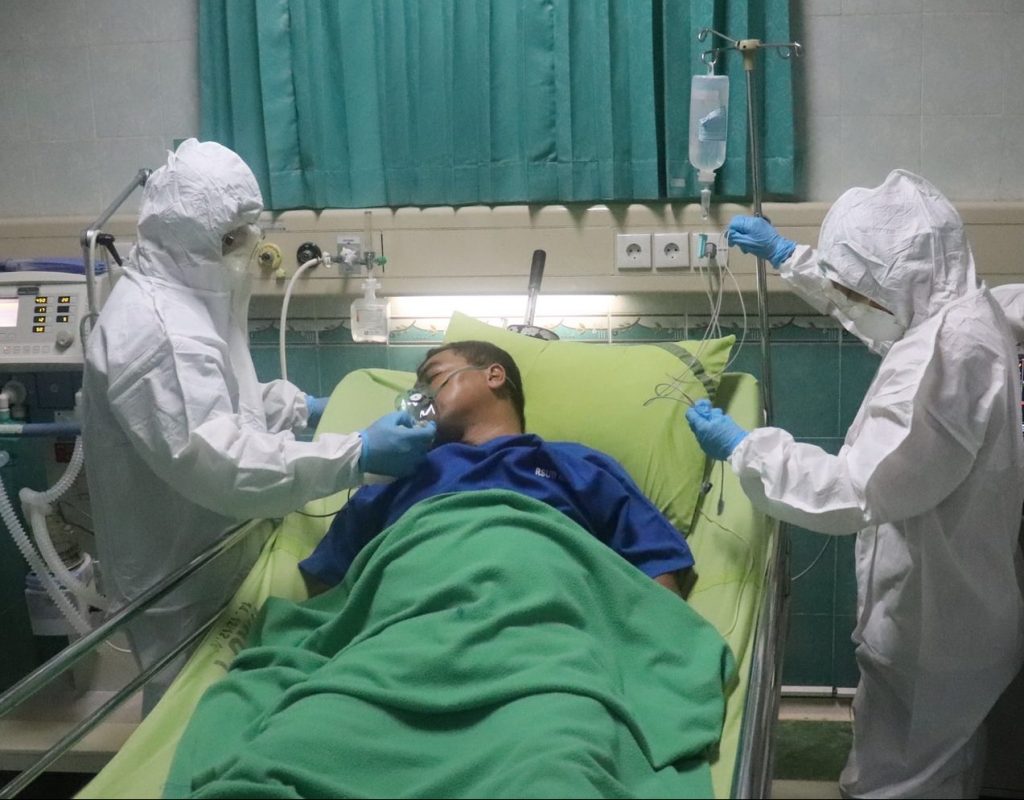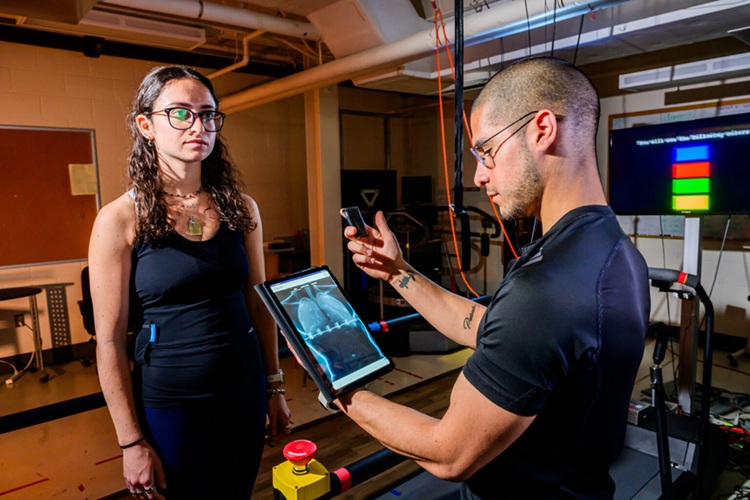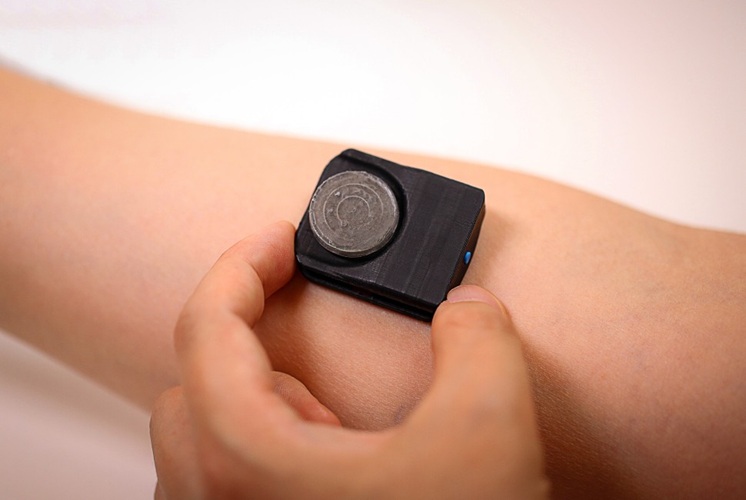Groundbreaking AI-Driven Sepsis Diagnosis Technology Could Guide Personalized Treatment for Hospitalized COVID-19 Patients
|
By HospiMedica International staff writers Posted on 04 Feb 2022 |

A novel diagnostic assay for the early and rapid diagnosis of sepsis, based on the detection of unique molecular signatures of sepsis specific to the immune response, rather than the presence of a pathogen, could guide personalized treatment for hospitalized COVID-19 patients.
Asep Medical Holdings Inc. (Vancouver, BC, Canada) has finalized an exclusive licensing arrangement with the University of British Columbia (Vancouver, BC, Canada) for a patented and potentially groundbreaking AI-driven technology that enables early and accurate diagnosis of the deadly disease sepsis, which is also a major contributing factor in COVID-19 morbidity. Asep’s novel diagnostic test called SepsetER senses the dysfunctional immune response underlying sepsis at the time that patients first enter the emergency room. The test is a blood-based gene expression assay that is straightforward to implement, and results are obtained in about an hour in the emergency room or intensive care unit. Current diagnostic tools deliver results after approximately 24-36 hours often delaying the initiation of treatment. SepsetER is designed to enable physicians to quickly predict the severity of the disease and thus define better, more immediate treatment options for the patient.
Sepsis, a difficult-to-diagnose disease because of extensive variability in symptoms and outcomes, can be divided into five separate subtypes/endotypes according to the underlying biological mechanisms that drive the disease. Patients hospitalized with life-threatening COVID-19 also fit into these same endotypes, indicating that many COVID-19 patients have severe sepsis. Two endotypes are particularly associated with more severe sepsis and accompanying organ failure and patients falling into these two subtypes were more likely to die. The most severe form of sepsis, occurring in up to one-half of all hospitalized COVID-19 patients, can lead to multi-organ failure, the requirement for mechanical ventilation, and in many cases death.
Furthermore, many patients who recover from severe sepsis suffer from chronic medical issues which are very similar to those issues that afflict patients that suffer from long-term COVID-19 disease, termed long COVID. Being able to classify sepsis into the five sepsis endotypes could provide key information to physicians regarding the underlying mechanisms of disease and help guide personalized treatment options for those patients at greatest risk of severe sepsis. Asep's patent licensing arrangement with UBC gives it exclusive rights to develop the sepsis severity endotypes into a diagnostic test and bring the test to market.
"This technology will enable us to make a major impact on the lives of patients who acquire this deadly syndrome. Early and accurate diagnosis is vital to saving lives and we expect this technology to be widely used in hospitals and clinics around the world," said leading UBC microbiologist and the company's founding director and COO, Dr. Robert E.W. Hancock who led the development of the technology.
Related Links:
Asep Medical Holdings Inc.
The University of British Columbia
Latest COVID-19 News
- Low-Cost System Detects SARS-CoV-2 Virus in Hospital Air Using High-Tech Bubbles
- World's First Inhalable COVID-19 Vaccine Approved in China
- COVID-19 Vaccine Patch Fights SARS-CoV-2 Variants Better than Needles
- Blood Viscosity Testing Can Predict Risk of Death in Hospitalized COVID-19 Patients
- ‘Covid Computer’ Uses AI to Detect COVID-19 from Chest CT Scans
- MRI Lung-Imaging Technique Shows Cause of Long-COVID Symptoms
- Chest CT Scans of COVID-19 Patients Could Help Distinguish Between SARS-CoV-2 Variants
- Specialized MRI Detects Lung Abnormalities in Non-Hospitalized Long COVID Patients
- AI Algorithm Identifies Hospitalized Patients at Highest Risk of Dying From COVID-19
- Sweat Sensor Detects Key Biomarkers That Provide Early Warning of COVID-19 and Flu
- Study Assesses Impact of COVID-19 on Ventilation/Perfusion Scintigraphy
- CT Imaging Study Finds Vaccination Reduces Risk of COVID-19 Associated Pulmonary Embolism
- Third Day in Hospital a ‘Tipping Point’ in Severity of COVID-19 Pneumonia
- Longer Interval Between COVID-19 Vaccines Generates Up to Nine Times as Many Antibodies
- AI Model for Monitoring COVID-19 Predicts Mortality Within First 30 Days of Admission
- AI Predicts COVID Prognosis at Near-Expert Level Based Off CT Scans
Channels
Critical Care
view channel
Novel Intrabronchial Method Delivers Cell Therapies in Critically Ill Patients on External Lung Support
Until now, administering cell therapies to patients on extracorporeal membrane oxygenation (ECMO)—a life-support system typically used for severe lung failure—has been nearly impossible.... Read more
Generative AI Technology Detects Heart Disease Earlier Than Conventional Methods
Detecting heart dysfunction early using cost-effective and widely accessible tools like electrocardiograms (ECGs) and efficiently directing the right patients for more expensive imaging tests remains a... Read more
Wearable Technology Predicts Cardiovascular Risk by Continuously Monitoring Heart Rate Recovery
The heart's response to physical activity is a vital early indicator of changes in health, particularly in cardiovascular function and mortality. Extensive research has demonstrated a connection between... Read more
Wearable Health Monitoring Device Measures Gases Emitted from and Absorbed by Skin
The skin plays a vital role in protecting our body from external elements. A key component of this protective function is the skin barrier, which consists of tightly woven proteins and fats that help retain... Read moreSurgical Techniques
view channel
Intravascular Imaging for Guiding Stent Implantation Ensures Safer Stenting Procedures
Patients diagnosed with coronary artery disease, which is caused by plaque accumulation within the arteries leading to chest pain, shortness of breath, and potential heart attacks, frequently undergo percutaneous... Read more
World's First AI Surgical Guidance Platform Allows Surgeons to Measure Success in Real-Time
Surgeons have always faced challenges in measuring their progress toward surgical goals during procedures. Traditionally, obtaining measurements required stepping out of the sterile environment to perform... Read morePatient Care
view channel
Portable Biosensor Platform to Reduce Hospital-Acquired Infections
Approximately 4 million patients in the European Union acquire healthcare-associated infections (HAIs) or nosocomial infections each year, with around 37,000 deaths directly resulting from these infections,... Read moreFirst-Of-Its-Kind Portable Germicidal Light Technology Disinfects High-Touch Clinical Surfaces in Seconds
Reducing healthcare-acquired infections (HAIs) remains a pressing issue within global healthcare systems. In the United States alone, 1.7 million patients contract HAIs annually, leading to approximately... Read more
Surgical Capacity Optimization Solution Helps Hospitals Boost OR Utilization
An innovative solution has the capability to transform surgical capacity utilization by targeting the root cause of surgical block time inefficiencies. Fujitsu Limited’s (Tokyo, Japan) Surgical Capacity... Read more
Game-Changing Innovation in Surgical Instrument Sterilization Significantly Improves OR Throughput
A groundbreaking innovation enables hospitals to significantly improve instrument processing time and throughput in operating rooms (ORs) and sterile processing departments. Turbett Surgical, Inc.... Read moreHealth IT
view channel
Printable Molecule-Selective Nanoparticles Enable Mass Production of Wearable Biosensors
The future of medicine is likely to focus on the personalization of healthcare—understanding exactly what an individual requires and delivering the appropriate combination of nutrients, metabolites, and... Read more
Smartwatches Could Detect Congestive Heart Failure
Diagnosing congestive heart failure (CHF) typically requires expensive and time-consuming imaging techniques like echocardiography, also known as cardiac ultrasound. Previously, detecting CHF by analyzing... Read moreBusiness
view channel
Expanded Collaboration to Transform OR Technology Through AI and Automation
The expansion of an existing collaboration between three leading companies aims to develop artificial intelligence (AI)-driven solutions for smart operating rooms with sophisticated monitoring and automation.... Read more


















